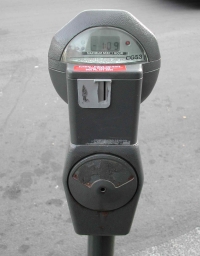Council funding
See also...
For the rates revenue and expenditure of a council, select its profile from here:

Councils raise much of their funding through rates, investments, fees and charges. Central government also provides some funding or subsidies towards particular activities, mainly roading.
As the amounts of revenue that councils raise are significant, all councils must adopt policies on revenue and financing, liability managements, investment, development contributions, partnerships with the private sector, and remissions or postponement of rates on Māori land.
Rates
Rates are the main way councils fund their activities.
The Local Government (Rating) Act 2002 (the LGRA) provides councils with flexible powers to set, assess and collect rates from landowners. As the rating of land is a tax, it is important that policies and processes associated with all aspects of rating are transparent and accountable, and that council processes and information enable ratepayers to identify and understand their liability for rates.
Mechanisms are set out in the LGRA to allow councils to raise revenue through rates from the community generally, specified groups or categories of ratepayers, and those who use or generate the need for particular services or amenities -
- General rates – where the community as a whole meets costs of a particular function or functions. These taxes are rated on property value, according to a ‘cents in the dollar’ formula set annually by the council. The amount ratepayers pay varies according to their property value. Each council decides if the rates will be assessed on the land value, the capital value or the annual value of the property.
- Targeted rates – these are designed to fund a function or group of functions. Factors which can be used for calculating targeted rates are– land value, improvement value, capital value, annual value, total land area, area of land paved, sealed or built on, area of land protected, area of floor space of buildings, number of connections, number of water closets and urinals, number of separately used/inhabited parts, and extent of provision of services.
- Differential rates – general rates can be set on a differential basis, where the council can take into account property value, location, area, use, and activities allowed for under the Resource Management Act.
- Uniform annual general charges – these are fixed charges applied to every rating unit, no matter the value of the property.
- Water rates – some councils meter water consumption and charge accordingly.
Where any targeted rate is calculated as a fixed amount per rating unit, a council cannot collect more than 30% of its total rates revenue by way of a combination of those targeted rates and the uniform annual general charges.
Regional councils have the same rating powers as territorial authorities.
Development contributions
New subdivisions and more intensive developments in existing areas can impose significant new costs on existing ratepayers. Councils can decide that developers and their clients should bear the costs of new infrastructure, such as reserves, roads, water and wastewater infrastructure, and community facilities.
Petrol taxes
City and district councils receive revenue from a petrol tax collected by oil companies and returned to councils. This revenue is available for general expenditure by the council.
Subsidies and grants
In financial year 2011/12, about 15% of the total revenue of all councils came from central government subsidies or grants. This translated to $1.15 billion, an increase from $1.05 billion in 2010/11. Most of councils' spending is on roading and transportation systems (29% of all operating expenditure).
Fees and charges
Many councils charge users for some council services such as swimming at council pools. These are usually referred to as user charges.
Councils can also fix reasonable charges for a range of regulatory services, such as issuing permits and licences, undertaking inspections (such as building inspections) and issuing parking infringement notices.
Opportunities for rates reductions
Under specific circumstances, ratepayers can apply to their council for a reduction in their rates, called a remission, or for a delay in when their rates are due, called a postponement. Councils may consider whether to provide remissions and postponements and, if they choose to provide them, must develop a policy setting out the basis for accepting applications including consulting their community.
Councils must have a policy on remissions and postponements on Māori land even if they decide not to provide these. The policy's development must consider criteria set out in the Local Government Act 2002 and the community must be consulted.
The Rates Rebate Scheme subsidises rates for low-income homeowners and ratepayers based on their rates cost. This was extended from 1 July 2006 and, for the 2012/13 financial year, the Scheme provided rebates of up to $595 depending on ratepayer income. While additional information can be accessed from the Rates Rebates Scheme page of the Department of Internal Affairs website, ratepayers must apply to their council for a rates rebate.